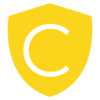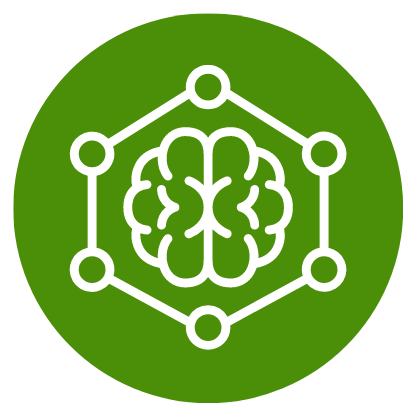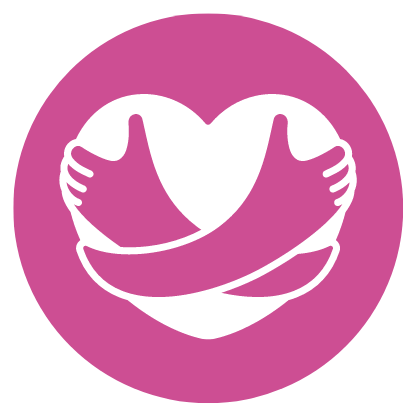How to Practice Effectively – Annie Bosler and Don Greene | TED-Ed
We Make Your Education Count

Get the Credit You Deserve and Become the Most Attractive Job Candidate by Earning and Posting A+ Badges to Your Linkedin Profile.
Sign Up to Get Started at Accredicity
|
Become a master of anything through effective practice: Unlock the power of myelin to enhance your performance. How to Practice Effectively: Annie Bosler and Don Greene explain how repetition and practice can help to improve skill and performance. Our brains have two kinds of neural tissue: grey matter and white matter. Myelin, a fatty substance that wraps around axons, increases with repetition and creates a "superhighway" for information to move from the brain to the muscles. Effective practice is consistent, intensely focused, and targets weaknesses. Minimize distractions, start slowly, do frequent repetitions with allotted breaks, and practice in your brain in vivid detail to maximize practice time. Studies suggest that even mentally practicing can improve performance. Effective practice is the best way to push individual limits and maximize potential. Learning Outline1. Understand the two types of neural tissue in the brain and how they relate to physical skill mastery: grey matter and white matter. Instructional ContentPracticing effectively can be an invaluable skill for mastering any physical skill. It can help us to perform with more ease, speed and confidence. But what effect does practice have on our brains? Our brains have grey matter and white matter. Grey matter processes information and directs signals, while white matter is mostly fatty tissue and nerve fibers. In order for our bodies to move, information needs to travel from the grey matter, down the spinal cord and through a chain of nerve fibers called axons to our muscles. Practice causes the axons in the white matter to be wrapped in a fatty substance called myelin. This myelin sheath helps to increase the insulation around the axon chains and make them more efficient. It’s this myelin covering that seems to change with practice and forms a “superhighway” for information. This helps us to perform physical tasks with greater speed and accuracy. However, there is no “magic number” to quantify the amount of time needed to master a skill. It’s also the quality and effectiveness of that practice that matters. Effective practice should be consistent, intensely focused, and target content and weaknesses at the edge of our current abilities. To make the most of our practice time, we can focus on the task at hand, start out slowly and practice in our brain in vivid detail. Studies have shown that elite performers often divide their time into multiple daily practice sessions of limited duration. With effective practice, we can push our individual limits and maximize our potential. Watching the video, How to Practice Effectively…for Just About Anything, by Annie Bosler and Don Greene, can provide further insight into the science behind effective practice. It can help us to understand the power of practice and how it can help us to master any physical skill. Cognition
|

Practicing anything, like playing an instrument or doing a pirouette, is like riding a bike - it takes lots of practice! The secret behind practice is that it helps our brains make connections between the grey matter (which processes information) and the white matter (which has nerve fibers). These connections are like a superhighway for information, and when we practice, we help build more layers of insulation (like on electrical cables) around the nerve fibers, making the highway faster and more efficient. So, to practice effectively, focus on the task, don't get distracted, start slowly, break it down into smaller, more frequent chunks, and practice in your head too! Video Quotes"Effective practice is consistent, intensely focused, and targets content or weaknesses that lie at the edge of one's current abilities" -Don Greene "Focus on the task at hand. Minimize potential distractions by turning off the computer or TV and putting your cell phone on airplane mode" -Don Greene "Some recent studies in mice suggest that the repetition of a physical motion increases the layers of myelin sheath that insulates the axons" -Annie Bosler Related Quotes"Practice isn't just about getting it right, it's also about learning what doesn't work." - Don Greene Competencies1. Cognitive Flexibility Learning Outcomes1. Analyze: Students will be able to analyze how practice affects the inner workings of the brain, specifically the myelination of neural pathways. 2. Evaluate: Students will evaluate the importance of effective practice, such as consistency, intensity, and targeting content or weaknesses. 3. Create: Students will create an effective practice plan to maximize their potential, incorporating tips such as minimizing distractions, gradually increasing speed, and practicing in the brain in vivid detail. 4. Apply: Students will apply the theories they have learned to their own field of study, such as athletics or music. 5. Understand: Students will understand the role that myelin sheath plays in forming a superhighway for information between the brain and muscles. 6. Remember: Students will remember the importance of effective practice, such as consistency, intensity, and targeting content or weaknesses. Sample Answers1. Effective practice is the key to mastering a physical skill, as it helps increase the layers of myelin sheath that insulates neural pathways. This improves the speed and efficiency of information traveling from the brain's grey matter to our muscles. 2. To get the most out of practice, one should focus on the task at hand, gradually increase the speed of quality repetitions, and practice in their mind in vivid detail. 3. Studies suggest that many elite performers divide their practice time into multiple daily sessions of limited duration, and use 50-60 hours per week on activities related to their craft. Annie Bosler and Don GreeneAnnie Bosler and Don Greene are experts in motor learning and skill acquisition. Bosler is a professor of psychology at the University of Denver, while Greene is an associate professor of kinesiology at Indiana University. They have published numerous papers on the science of motor learning and skill acquisition and have extensive experience in the field. Their research focuses on how people learn motor skills, how to practice effectively, and how to optimize performance. They have written and co-authored several books on the topic, including "Smart Practice: Optimize Performance and Retain Skills." Their expertise in the area of motor learning and skill acquisition makes them ideal experts to discuss the topic of how to practice effectively. They are not associated with any organization or business. Learning DesignCognitive Flexibility is an important competency for learners to understand in order to help them think more effectively, problem solve, and adapt to different situations. Learning Strategies are also important for helping students to be successful in their studies by providing them with the skills to plan, organize, and strategize their studies. Finally, Healthy Behaviors are important for helping students to take care of their mental and physical wellbeing in order to be successful in their studies. In order to help learners build these competencies, a framework or pedagogy that could be used is a constructivist approach. This approach emphasizes the learner's own construction of knowledge through exploration, problem solving, and collaboration with peers. The instructor can provide the students with opportunities to explore the content, discuss and reflect on their experiences, and practice the skills they are learning. The instructor can also provide opportunities for students to apply their knowledge to real world situations and to collaborate with peers. This approach can help to foster learning and the development of the competencies. AssessmentMultiple-Choice Exam Question: What is the benefit of myelination of neural pathways? A. It helps neurons move more efficiently along neural pathways Answer: C. It helps neurons move faster and more efficiently QuestionsCommon Questions: Real-Life Examples and Scenarios Questions: KeywordsEffective Practice, Myelin Sheath, "Master Physical Skill", "Practice Repetition Improvement", "Repetition Affect Brain", "Myelin Insulation Axons", "Axons Chain Muscles", "Quality Repetitions Speed", "Frequent Repetitions Breaks", "Vivid Detail Imagining" Facts1. Myelin, a fatty substance, insulates axons and forms a superhighway for information between the brain and muscles. Trends1. Create practice routine templates: Develop templates for different skill sets that have an effective practice routine tailored to them. For example, a template for a dance practice routine could include a warm-up, drills, and a cool-down. These templates can be used as a starting point for people who are new to a skill or as a way to switch up an existing routine. 2. Develop a practice app: Create an app that helps people track and measure their practice progress. The app could include features such as time tracking, drills, and tracking of physical performance over time. 3. Create a practice challenge: Invite people to challenge themselves to practice a certain skill for a set period of time. The challenge could include a reward or incentive for participants who reach the challenge goal. 4. Develop virtual practice sessions: Create virtual practice sessions with a coach or mentor that can be joined online. This allows people to access expert advice and guidance while still practicing on their own. SourceThis learning instructional guidance was formulated using the GPT-3 language model created by OpenAI. Share#PracticeMakesPerfect! Master any physical skill with effective practice - consistent, intensely focused, and targeting content/weaknesses. Take breaks & visualize the motion - research suggests this works! #MuscleMemory #Myelin #GreyMatter #WhiteMatter #Improvement #PracticeTips 🤔🤓 @Accredicity |








 49 Creds - Cognition
49 Creds - Cognition



